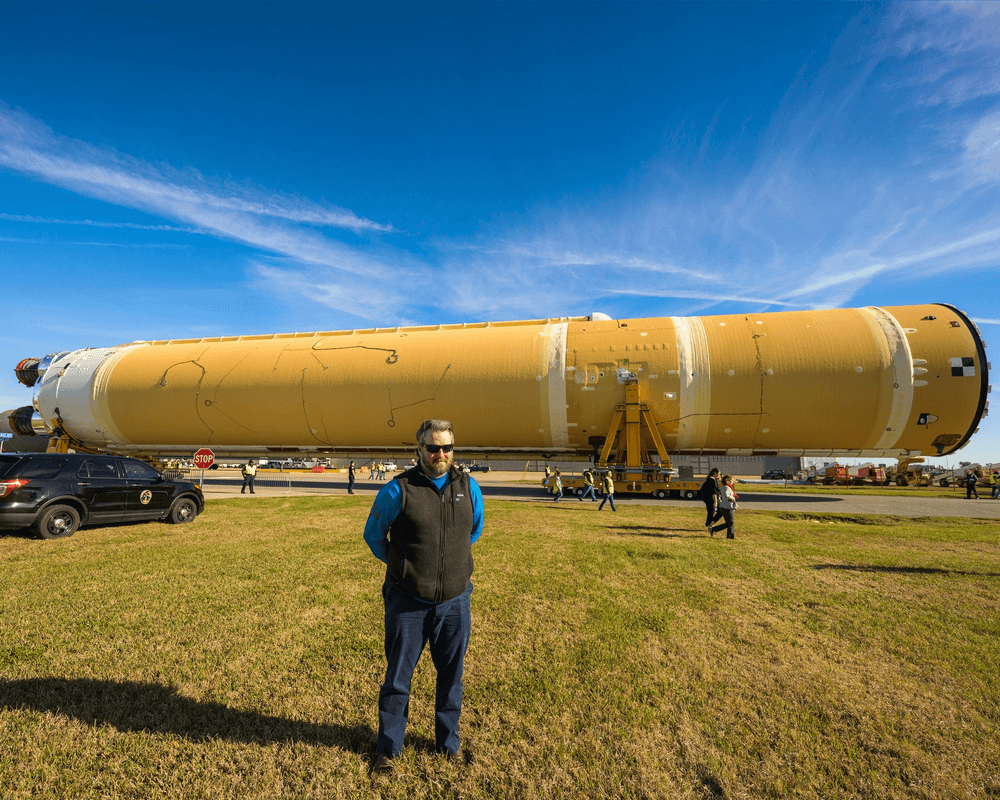Q&A with Gateway's Ben Birkenstock
When Ben Birkenstock flew aboard NASA’s K-135 reduced-gravity aircraft for the first time, it wasn’t just the passengers taking flight. As Birkenstock first experienced the effects of weightlessness, a dream of a career at NASA took flight inside his mind.
After earning his bachelor’s degree in mechanics and astronautics from the University of Wisconsin, Madison, and 15 years with NASA, Birkenstock is now the vehicle equipment lead for Gateway’s vehicle systems integration office. He manages a team responsible for the management, oversight, and integration of Gateway’s government-furnished and off-the-shelf equipment. His team also establishes the maintenance plans and spare part requirements, analyses, and assessments for the lunar-orbiting space station.

***
Where did you grow up and when/how did you become interested in a career at NASA?
I was raised in Hartland, Wisconsin, just west of Milwaukee. While pursuing an engineering mechanics and astronautics degree at the University of Wisconsin, Madison, I was able to participate in NASA’s reduced-gravity student flight opportunities program for college students. Our team put together a proposal to design, build, and fly a free-floating robot to assist the crew with tasks aboard the space station. This was at the beginning of rapid prototyping, and we used that emerging technology to come up with a hard shell that was controlled with a fan/servo network. The team took a university van from Madison to Ellington Field, and I was able to fly on the KC-135 two years in a row. After that experience, I was hooked. Having a career with NASA and human spaceflight became a driving goal.
How long have you been at NASA?
I am coming up on 15 years of service with NASA. I was also a contractor with United Space Alliance for several years prior to that, working on the Space Shuttle Program during return to flight (after the Columbia accident).
What has been your favorite memory while working at NASA?
The delivery of the first Space Launch System core stage flight unit is high on the list. It represented a culmination of the team’s perseverance and commitment to excellence for close to a decade, from design reviews on presentation slides to building and testing large-scale qualification hardware, to standing up a spaceflight production line. Seeing it roll-out of the Michoud Assembly Facility to continue its Artemis I journey was special.
What excites you most about Gateway and its role in Artemis missions?
Gateway is employing a vibrant and dynamic work environment to design and build a tangible asset that will enable a sustained human presence on and around the Moon. Being able to facilitate and contribute to that next evolutionary step of human and robotic exploration is palpably exciting not only for Artemis missions but for agency goals.
Being surrounded by such a high-performing group of people, what’s a great piece of advice you would give to someone interested in your role?
Stay curious and ask for help. As the aerospace industry evolves, the ability to remain inquisitive, challenge assumptions, and creatively execute missions will be at a premium. Additionally, I would submit that NASA’s greatest achievements are made possible when a diverse, inclusive team is challenged and able to become collectively successful.
What are five words your friends/family would use to describe you?
Generous, resilient, pensive, conscientious, and persistent.
Bonus Question: Are there any applicable quotes?
“You can create a group that produces good reasoning as an emergent property of the social system.” - J. Haidt
“Don’t let your preoccupation with reality stifle your imagination.” - unknown.
***
The Gateway program is an international collaboration to establish humanity’s first space station around the Moon, an essential element of NASA’s Artemis missions. Gateway will host many capabilities for sustained exploration and research in deep space, including docking ports for a variety of visiting spacecraft, space for crew to live and work, and onboard science investigations to study heliophysics, human health, and life sciences, among other areas. Gateway will be a critical platform for developing technology and capabilities to support future Mars exploration.







